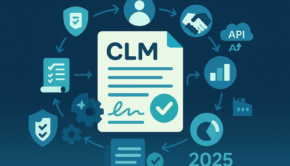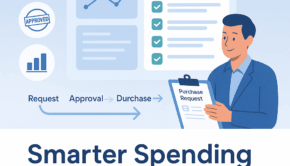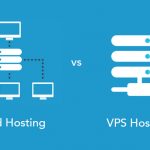Understanding the Whats and Hows of Coding Qualitative Data
Image Source: Pexels
Doing quantitative research is often more straightforward than doing qualitative research. Even if formulas are difficult, data is always quantifiable.
Meanwhile, assessment of feelings and opinions can’t come from numerical statistics. For this reason, coding plays a fundamental role in qualitative data analysis.
Coding qualitative data is pivotal in the analytical process of qualitative research. When you gather data, you may observe and structure interpretations into meaningful theories.
It also helps you to be more meticulous with your findings despite the absence of numerical data. Thus, avoiding the risk of biases in your analysis.
Qualitative Research
Qualitative research is the collection, analysis, and interpretation of non-numerical data. It utilizes qualitative methods, such as in-depth interviews, open-ended surveys, and focus groups. It also does content analysis using documents, free-text, and voice records.
There are various methods of collecting qualitative data. Each of them has unique advantages and disadvantages. As such, you should choose the one that best fits your research questions and processes.
Below is a list of some qualitative methods:
- In-Depth Interviews
In-depth interviews are those wherein interviewers make discussion guides. They do one-on-one interviews with a series of participants. This aims to delve into their behaviors, description, and motivations.
- Open-Ended Surveys
Open-ended surveys or questions are also called free-form surveys. Questions are not enclosed in limited options. Most respondents answer in a free-text format based on their complete understanding. Hence, they can’t answer questions with a yes or no.
- Focus Group Discussions
Here, researchers have to recruit participants in a discussion led by a moderator. It allows them to study the participants in a more natural setting. This method is often used in market research to gather customer feedback. It can also gain access to cultural and social groups and select sites and samples for research.
- Case Studies
Case studies are approaches to better understand a person or a group in a real-life context. It can help researchers grasp multi-faceted phenomena in their entirety.
- Semi-Structured Interviews
In semi-structured interviews, researchers make guides to manage conversation flows. Still, interviews can go off-script and be more flexible. With that, people involved can balance take the interview beyond the discussion guide.
- Observations
Observations call for researchers to head to target locations to observe participants’ behavior. These are usually done in cultural observations. For example, if researchers want to observe the Sentinelese tribe, they must go to the island. This can be dangerous since the tribe attacks those who try to step into their territory.
- Diary Studies
Diary studies gather data about people over a specific period. It aims to understand their in-context behavior and experiences. Participants must log their daily activities, so researchers can make observations and interpretations.
Transcribing Interviews
Keep in mind that you must transcribe the interviews to analyze them better. You can use auto-transcription software or outsourced transcription services. You can choose from the following:
- Verbatim transcription
It’s the exact transcription of every word, pause, and stutter.
- Intelligent transcription
Like the verbatim transcription, every word is transcribed. But pauses and stutters are excluded.
- Edited transcription
This is recommended if you wish to publish the transcript. It’s already cleaned up and edited to improve clarity.
Coding Qualitative Data
Coding is pivotal in qualitative research. You can do coding by labeling and sorting data to observe themes and patterns. This aims to do a systematic and rigorous analysis of free-form data.
In essence, you can assign words or phrases as codes to classify a recurring theme in the data. Note that codes should be relevant to the free-form responses.
With coding, you can maintain accuracy and transparency. It allows you to look for insights that can represent the data and stories behind them. It also increases data validity and reduces biases.
How to Code Qualitative Data
More often than not, coding qualitative data varies depending on the aim of your research. You can do it by hand or by the data analysis software. It involves reading through data, assigning codes, and grouping codes into themes. From there, you can make interpretations to finish your research findings.
There is no right or wrong way to code data. But, some approaches are more appropriate depending on your method and research purpose. Below is a couple of these:
- Deductive Coding
In deductive coding, you start by creating a predefined set of codes. These codes depend on your research questions and framework.
For example, you wish to know why some customers prefer to buy an Android phone rather than an iPhone. Your codes may include the price, quality, and brand of the mobile phone.
Once finished, you will read through the data and assign codes. From there, you will check if your codes are close to the initial ones.
- Inductive Codes
Inductive coding requires you to create from scratch or derive codes from the data. There are no preconceived notions to consider. It enables ideas to emerge from the raw data. It is best for exploratory research since it is less prone to biases despite its complexity.
Steps for Coding Qualitative Data
- First Pass
You have to read the data and assign codes to excerpts. You don’t have to worry about coming up with the perfect codes. The purpose is to understand the data better. They will emerge and evolve as you do the second pass.
- Categorize Codes and Subcodes
After doing the first pass, you can now categorize codes. To do so, group similar codes or those that pertain to the same topics. Do this until you create a structure that fits your analysis.
- Do Further Rounds of Coding
This is to reevaluate the codes and categories. You may rename, recode, and merge them. You may even do some recategorizations if necessary.
This round involves diligence in analyzing and finding patterns to develop theories. In general, it’s better to reduce categories and focus on those that best classify your codes.
- Turn Codes and Categories into Final Narrative
After doing coding rounds, you can use your codes to construct your final narrative. Depending on your research purpose, the outcome can take various forms. It can be a theory, a series of findings, or a narrative.
You have to combine the creativity of your narrative with its analytical nature. From there, you can connect it to codes and ideas in data.
Qualitative data analysis can be tiring and time-consuming. Since responses are descriptive at most, you can’t quantify them with ease. Due to the absence of numerical data, it’s also pretty challenging to avoid biases. But, with coding, you can simplify the analysis and assure accuracy.
Bio
Ivan Serrano
Ivan Serrano is an enthusiastic writer who enjoys learning whatever he can about business development and growth hacking. He also enjoys sharing his knowledge of technology and how it can improve business communications on an international level.















